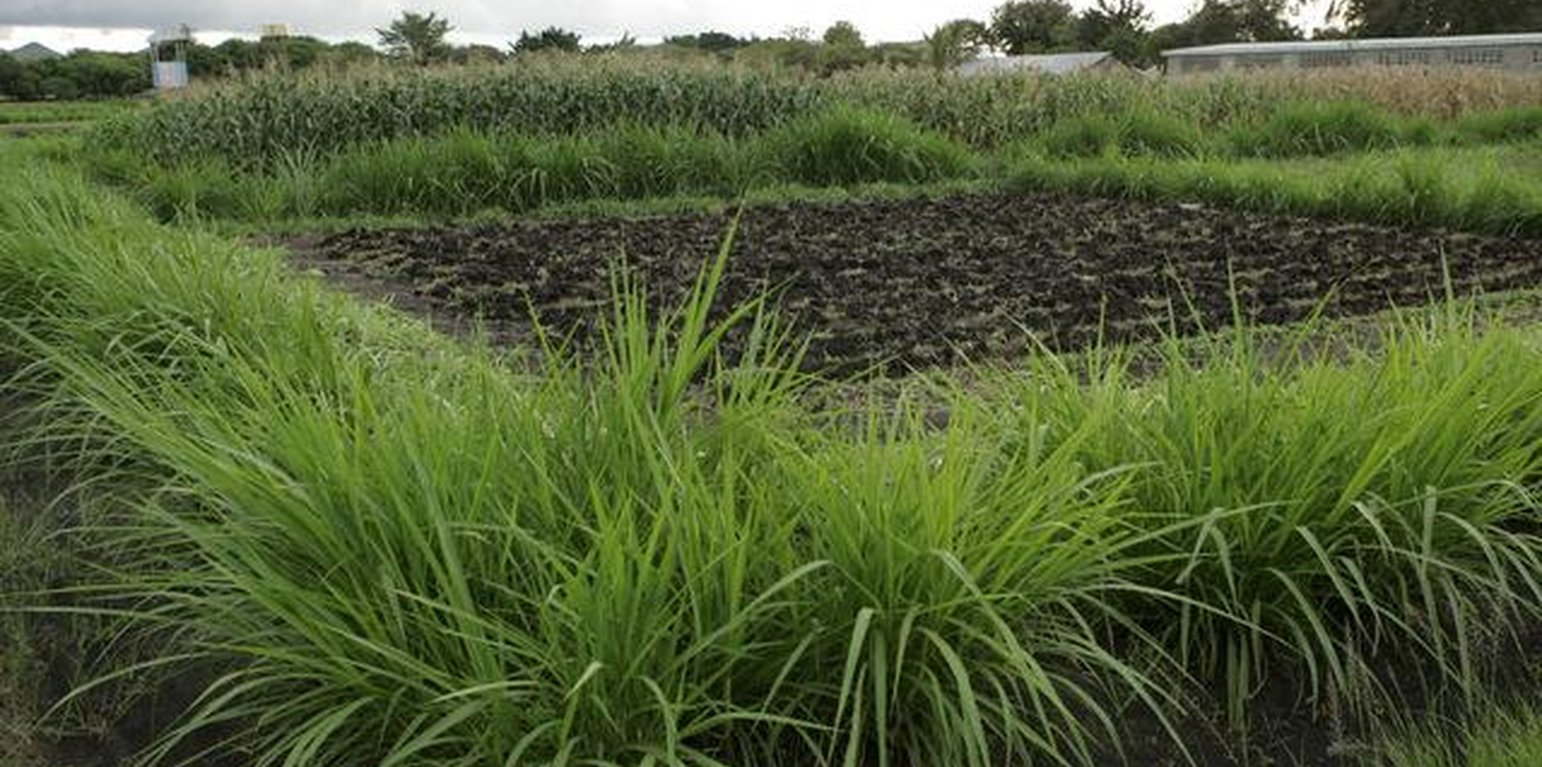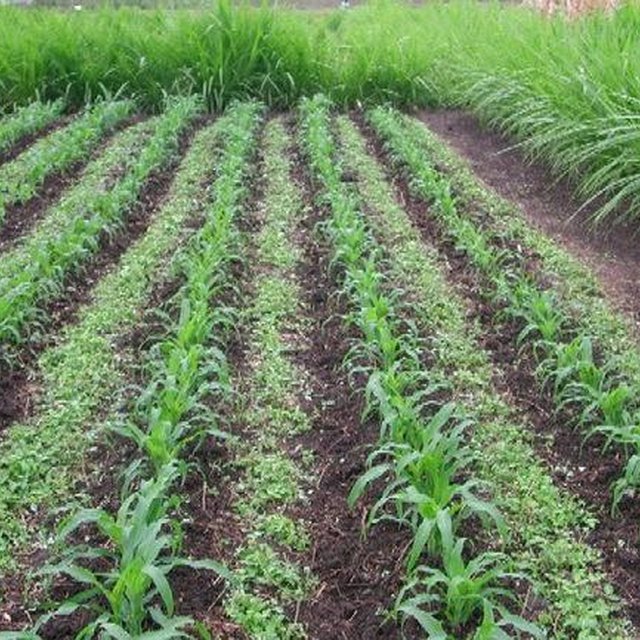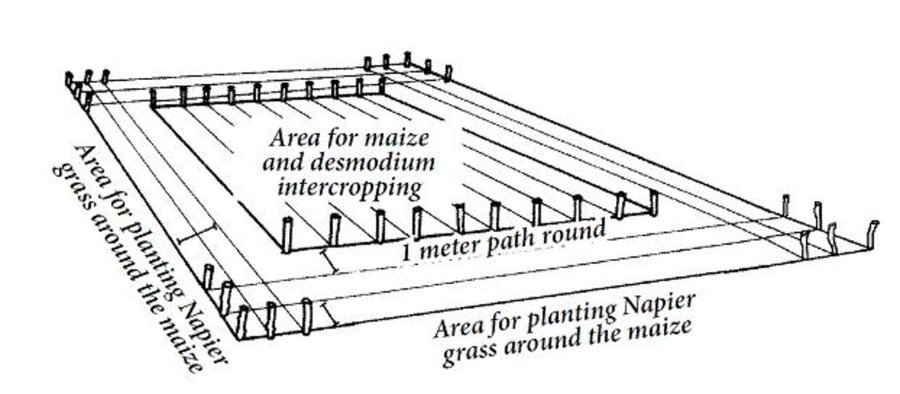



In the Lake Victoria region - like in many other parts of sub-Saharan Africa – stemborer pests, striga weeds and poor soil fertility are the main constraints to efficient production of cereals. In combination they often lead to complete crop failure. The “Push-Pull” technology efficiently controls the pests and progressively improves soil fertility. It involves intercropping maize with a repellent plant, such as desmodium (“push”); an attractant trap plant, such as napier grass (Pennisetum purpureum) is planted as a border crop around this intercrop (“pull”). The stemborer moths are attracted to volatile compounds emitted by the napier grass which at the same time serves as a haven for the borers' natural enemies. When moths lay eggs on napier grass a sticky substance secreted by the grass physically traps the moths’ larvae. Napier is also an important carbohydrate-rich fodder grass. Desmodium, a perennial cover crop, produces repellent volatile chemicals that push away the moths, and the plant effectively suppresses striga weeds through its root exudates. Furthermore, desmodium fixes nitrogen, conserves soil moisture, enhances arthropod abundance and diversity and improves soil organic matter, thereby making cereal cropping systems more resilient and adaptable to climate change. Being a low-growing plant it does not interfere with the crops' growth. Push-pull simultaneously improves cereal productivity; enables production of year-round quality fodder - thereby allowing for integration with livestock husbandry; diversifies income streams and enables smallholders to enter into the cash economy. It also improves soil fertility; protects fragile soils from erosion and enables a minimum tillage system. The technology is appropriate to resource-poor smallholder farmers as it is based on locally available plants, affordable external inputs, and fits well with traditional mixed cropping systems practiced in SSA.

Lugar: Lake Victoria region, Kenia
No. de sitios de Tecnología analizados:
Difusión de la Tecnología:
¿En un área de protección permanente?:
Fecha de la implementación: 10-50 años atrás
Tipo de introducción







| Especifique insumo | Unidad | Cantidad | Costos por unidad (USD) | Costos totales por insumo (USD) | % de los costos cubiertos por los usuarios de las tierras |
| Mano de obra | |||||
| Plant 3 consecutive rows of napier grass | Persons/day | 8,0 | 1,25 | 10,0 | |
| Material para plantas | |||||
| Napier | pieces | 1200,0 | 0,1666666 | 200,0 | |
| Desmodium seeds | kg | 0,5 | 18,9 | 9,45 | |
| Fertilizantes y biocidas | |||||
| Fertilizer | kg | 47,0 | 0,6808 | 32,0 | |
| Costos totales para establecer la Tecnología | 251.45 | ||||
| Costos totales para establecer la Tecnología en USD | 251.45 | ||||
| Especifique insumo | Unidad | Cantidad | Costos por unidad (USD) | Costos totales por insumo (USD) | % de los costos cubiertos por los usuarios de las tierras |
| Mano de obra | |||||
| Land preparation for maize | Persons/day | 6,0 | 1,166666 | 7,0 | 100,0 |
| Fertilizantes y biocidas | |||||
| Fertilizer for maiz | kg | 47,0 | 0,6808 | 32,0 | 100,0 |
| Indique los costos totales para mantenecer la Tecnología | 39.0 | ||||
| Costos totales para mantener la Tecnología en USD | 39.0 | ||||
Maize yields increase by 25-50% where stemborer is the only problem and by 300% in areas affected by stemborer and striga weed
All-year round quality fodder for cattle (napier grass and desmodium)
Reduced fertilizer inputs thanks to nitrogen-fixing by desmodium
Selling cereal grains, desmodium seed, napier grass (if not fed to own livestock), and milk
Weeding is minimized
Cover crop, live mulch
Cover crop, live mulch
Soil protected from erosion through desmodium (cover crop) and napier grass (barrier)
Reduced wind impacts due to napier barriers